María Arróniz Crespo, Davey L. Jones, Nick Ostle, and Thomas H. DeLuca
Odd though it may seem for this cold and often snowy land, fire is a fundamental feature of the Boreal Forest. The apparent destruction of such a disturbance event is in fact an act of renewal, creating wildlife habitat and maintaining forest health. But fire also opens new dilemmas around nitrogen availability in the boreal forest. About 250 – 450 kg N ha-1 of this precious nutrient are volatilize in each forest fire, from the burning of needles, twigs, shrubs, and the forest floor. If N is to be sustained in these forests, N must be replenished within the natural fire return interval.
During the past decades ecologists has been asking the same question over and over again, where does the N come from in a forest without leguminous or woody N fixers? In 2002, Tom DeLuca and colleagues discover that a substantial amount of N can enter the system via biological N fixation in cyanobacteria living epiphytically on feather mosses that cover the forest floor. This finding opened new questions about N dynamics within the boreal ecosystem: Is the fixed N held in the moss? How is all that N transferred ultimately to the trees, and how long is that process taken? and, is there a relationship between forest N status and N fixation rates in the feather mosses? In summary, how all that system works? After three years of intense and exciting research, our research team has generated some remarkable results that we believe will open new ways to understand ecosystem function in the Boreal Forest. The following provides a brief summary of some of our conclusions.
The relationship between cyanobacteria and feather mosses is often considered an association rather than a symbiosis as it is not yet known whether cyanobacterial colonisation is of benefit to the moss. Our results from a 360-year fire chronosquence in northern Sweden suggest that the transfer of fixed N from cyanobacteria may have little direct impact on P. schreberi function [1] and occurs only under conditions that facilitate high cyanobacterial colonisation and N fixation rates (e.g. early successional stands without a tree canopy). We traced the fate of fixed N at nanoscale level and observed a spatial differentiation for fixed N acquisition by the moss cells where uptake occurs only by photosynthetically active moss cells [2]. This restricts the moss assimilation of fixed N to conditions when cyanobacteria are present in the green living part of the moss [2]. The newly fixed N assimilated by the moss is greatly conserved in the moss tissue and eventual occurs in the humus layer as moss decomposes [3]. On an annual basis, we suggest that disturbance events such as drying-rewetting cycles may serve as short-term drivers to liberate the fixed N from senescent moss tissue [4]. On a long-term basis, our results showed that fire disturbance could serves as a major driver to liberate the N that is fixed by the cyanobacteria and hold in the moss tissue and humus layer [3].
During the past decades ecologists has been asking the same question over and over again, where does the N come from in a forest without leguminous or woody N fixers? In 2002, Tom DeLuca and colleagues discover that a substantial amount of N can enter the system via biological N fixation in cyanobacteria living epiphytically on feather mosses that cover the forest floor. This finding opened new questions about N dynamics within the boreal ecosystem: Is the fixed N held in the moss? How is all that N transferred ultimately to the trees, and how long is that process taken? and, is there a relationship between forest N status and N fixation rates in the feather mosses? In summary, how all that system works? After three years of intense and exciting research, our research team has generated some remarkable results that we believe will open new ways to understand ecosystem function in the Boreal Forest. The following provides a brief summary of some of our conclusions.
The relationship between cyanobacteria and feather mosses is often considered an association rather than a symbiosis as it is not yet known whether cyanobacterial colonisation is of benefit to the moss. Our results from a 360-year fire chronosquence in northern Sweden suggest that the transfer of fixed N from cyanobacteria may have little direct impact on P. schreberi function [1] and occurs only under conditions that facilitate high cyanobacterial colonisation and N fixation rates (e.g. early successional stands without a tree canopy). We traced the fate of fixed N at nanoscale level and observed a spatial differentiation for fixed N acquisition by the moss cells where uptake occurs only by photosynthetically active moss cells [2]. This restricts the moss assimilation of fixed N to conditions when cyanobacteria are present in the green living part of the moss [2]. The newly fixed N assimilated by the moss is greatly conserved in the moss tissue and eventual occurs in the humus layer as moss decomposes [3]. On an annual basis, we suggest that disturbance events such as drying-rewetting cycles may serve as short-term drivers to liberate the fixed N from senescent moss tissue [4]. On a long-term basis, our results showed that fire disturbance could serves as a major driver to liberate the N that is fixed by the cyanobacteria and hold in the moss tissue and humus layer [3].
On the other hand, the highly diverse bacterial and fungal communities that live in association with the moss [5] appear to access the fixed N efficiently and across all sections of the moss shoot, both green and brown sections [2]. Over the same 360-year fire chronosquence we observed a shift in bacteria community composition associated with the moss layer from oligotrophic to copiotrophic bacteria as stand age, reflecting an ameliorating of growth conditions for bacteria where moss N2 fixation is greatest [4]. Heterotrophic organisms which feed on or interact with cyanobacteria within this complex systems called “the bryosphere” - the living and dead parts of the moss layer along with the associated biota- are likely to play a key role in the turnover and cycling of fixed N at an ecosystem level. In this light, we observed a positive correlation between feather moss N2 fixation and ecosystem N accumulation following stand age, as previously described, but also with soil dissolve organic N and gross turnover of inorganic N along the fire chronosequence studied here [6]. Interestingly, rather than a decline in N status over time our findings indicate that the nutrient status of stands approached equilibrium during late secondary succession after fire where moss N2 fixation is greatest [6].
All the work accomplished herein could not been possible without the interest, contribution and enthusiasm of our colleagues. We are grateful to Simon Oakley and Kelly Mason (Lancaster University and CEH Lancaster, UK), Jeremy Bougoure, Daniel Murphy and Peta Clode (The University of Western Australia), Lorna Street (Heriot-Watt University, UK), Nick Cutler (Scott Polar Research Institute, UK), Virginia Souza-Egipsy (CSIC, Spain), Olle Zackrisson and Ingela Bergman (Institute for Subarctic Apline Landscape Research), Stephen Clayton Wade (Advanced Microscopy and Bioimaging Institute of Biological), Sarah Chesworth and Gwen Lancashire (Bangor Univeristy).
All the work accomplished herein could not been possible without the interest, contribution and enthusiasm of our colleagues. We are grateful to Simon Oakley and Kelly Mason (Lancaster University and CEH Lancaster, UK), Jeremy Bougoure, Daniel Murphy and Peta Clode (The University of Western Australia), Lorna Street (Heriot-Watt University, UK), Nick Cutler (Scott Polar Research Institute, UK), Virginia Souza-Egipsy (CSIC, Spain), Olle Zackrisson and Ingela Bergman (Institute for Subarctic Apline Landscape Research), Stephen Clayton Wade (Advanced Microscopy and Bioimaging Institute of Biological), Sarah Chesworth and Gwen Lancashire (Bangor Univeristy).
Publication outcomes (in prep):
1. Lorna E. Street, María Arróniz-Crespo, Leopoldo G. Sancho, Simon Oakley, Nick Ostle, Davey L. Jones and Thomas H DeLuca. Interactive effects of nitrogen deposition and nitrogen fixation on Boreal feather moss function. (Plant, Cell and Environment)
2. María Arróniz-Crespo, Jeremy Bougoure, Daniel Murphy, David L. Jones, Virginia Souza-Egipsy, Nick Cutler, Nick Ostle, Peta Clode, Stephen Clayton Wade, Thomas H. DeLuca. Nitrogen fixation in the boreal bryosphere: it takes a village. (Nature Plants)
3. Thomas H. DeLuca, Olle Zackrisson, Marie-Charlotte Nilsson, María Arróniz-Crespo. Tracing the Long-Term Fate of Nitrogen Fixed by Cyanobacteria in Pleurozium schreberi Brid (Mit.) Moss Carpets of Boreal Forests. (Ecosystems)
4. María Arróniz-Crespo, David L. Jones, Nick Ostle, Gwen Lancashire, Thomas H. DeLuca. Significant releases of organic nitrogen from Pleurozium schreberi Brid (Mit.) moss carpets of Boreal Forests: in situ monitoring by microdialysis probes. (Soil Biology & Biochemistry)
5. Nick A. Cutler, María Arróniz-Crespo, Lorna E. Street, David L. Jones, Dominique L. Chaput, Thomas H. DeLuca. Long-term recovery of microbial communities in the boreal bryosphere following fire disturbance (Ecology)
6. María Arróniz-Crespo, David L. Jones, Lorna E. Street, Nick Ostle, Simon Oakley, Olle Zackrisson, Kathrin Rousk, Johannes Rousk, Kelly Mason, Michael Gundale, Thomas H. DeLuca.. Long-term shifts in stand nutrient status through succession in fire-disturbed boreal forest (Functional Ecology)
*Results presented at the Boreal N Gap Workshop celebrated the 23th of March 2015 at Bangor University (Wales, UK)
1. Lorna E. Street, María Arróniz-Crespo, Leopoldo G. Sancho, Simon Oakley, Nick Ostle, Davey L. Jones and Thomas H DeLuca. Interactive effects of nitrogen deposition and nitrogen fixation on Boreal feather moss function. (Plant, Cell and Environment)
2. María Arróniz-Crespo, Jeremy Bougoure, Daniel Murphy, David L. Jones, Virginia Souza-Egipsy, Nick Cutler, Nick Ostle, Peta Clode, Stephen Clayton Wade, Thomas H. DeLuca. Nitrogen fixation in the boreal bryosphere: it takes a village. (Nature Plants)
3. Thomas H. DeLuca, Olle Zackrisson, Marie-Charlotte Nilsson, María Arróniz-Crespo. Tracing the Long-Term Fate of Nitrogen Fixed by Cyanobacteria in Pleurozium schreberi Brid (Mit.) Moss Carpets of Boreal Forests. (Ecosystems)
4. María Arróniz-Crespo, David L. Jones, Nick Ostle, Gwen Lancashire, Thomas H. DeLuca. Significant releases of organic nitrogen from Pleurozium schreberi Brid (Mit.) moss carpets of Boreal Forests: in situ monitoring by microdialysis probes. (Soil Biology & Biochemistry)
5. Nick A. Cutler, María Arróniz-Crespo, Lorna E. Street, David L. Jones, Dominique L. Chaput, Thomas H. DeLuca. Long-term recovery of microbial communities in the boreal bryosphere following fire disturbance (Ecology)
6. María Arróniz-Crespo, David L. Jones, Lorna E. Street, Nick Ostle, Simon Oakley, Olle Zackrisson, Kathrin Rousk, Johannes Rousk, Kelly Mason, Michael Gundale, Thomas H. DeLuca.. Long-term shifts in stand nutrient status through succession in fire-disturbed boreal forest (Functional Ecology)
*Results presented at the Boreal N Gap Workshop celebrated the 23th of March 2015 at Bangor University (Wales, UK)
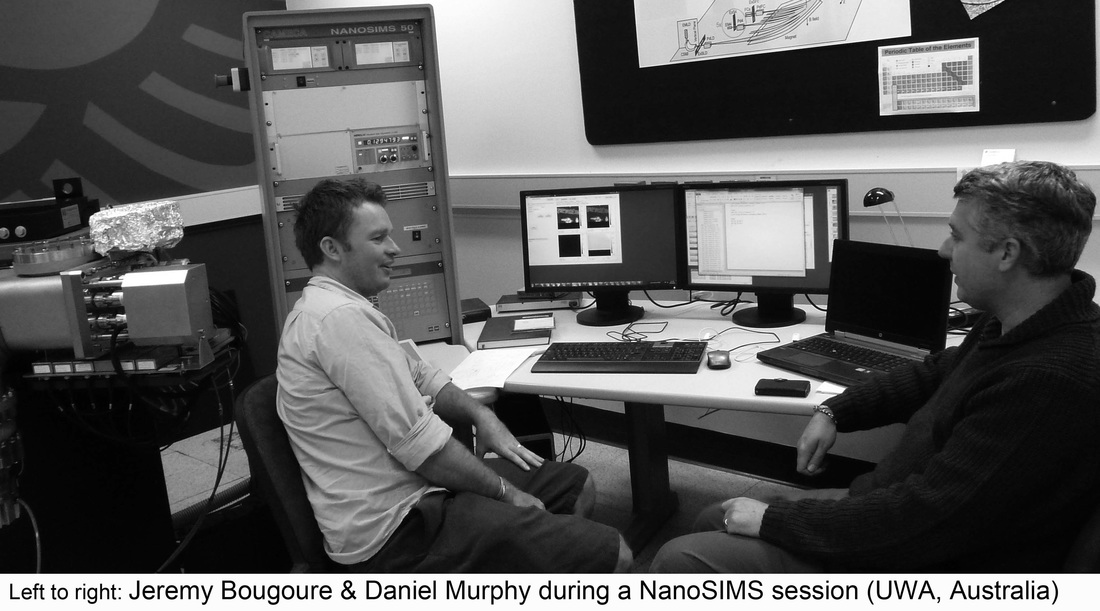
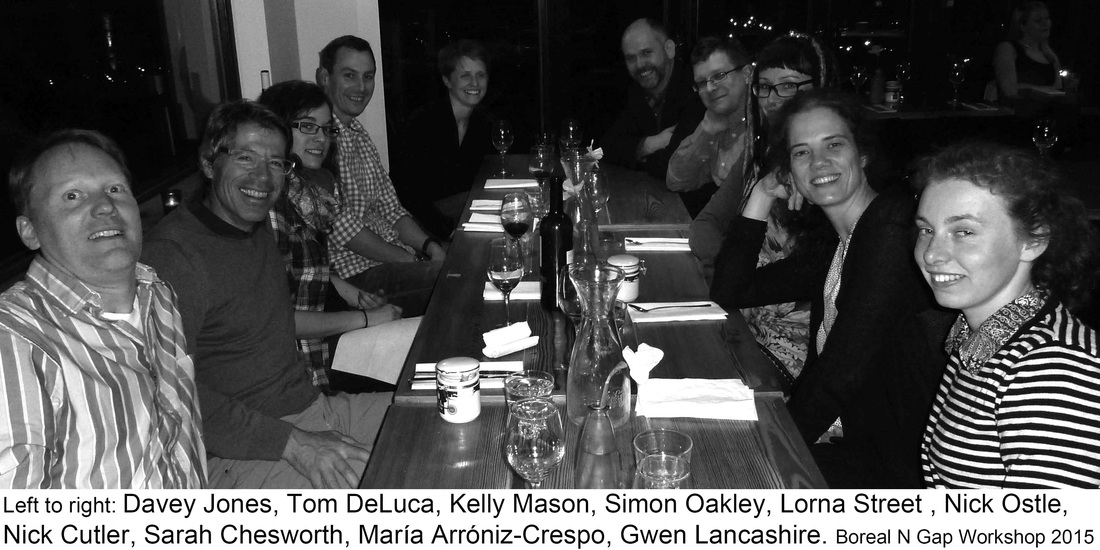
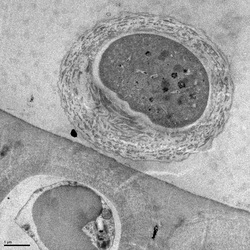
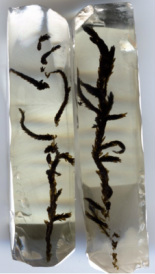
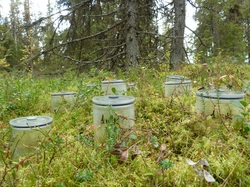
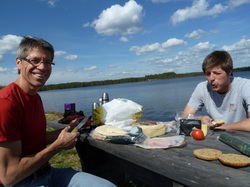
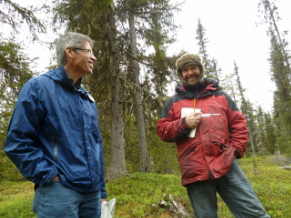
 RSS Feed
RSS Feed